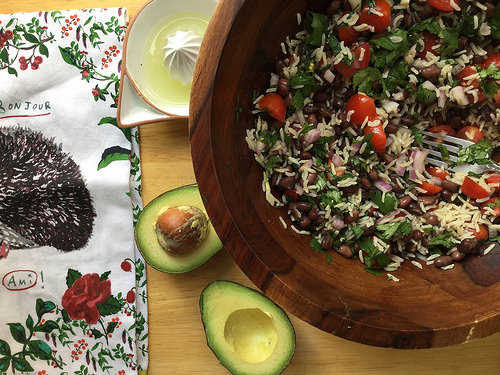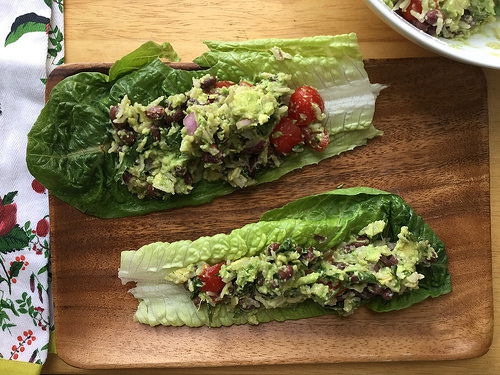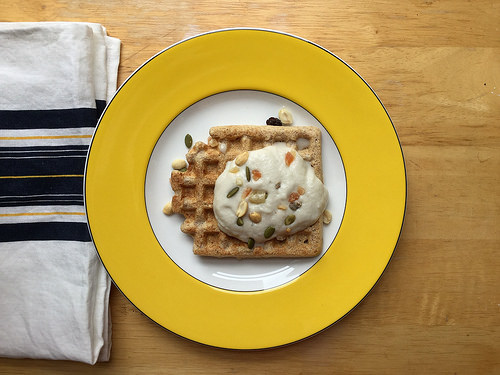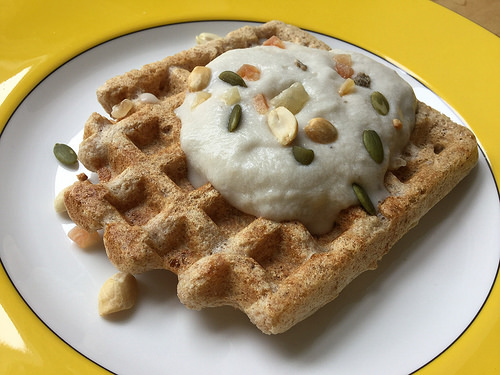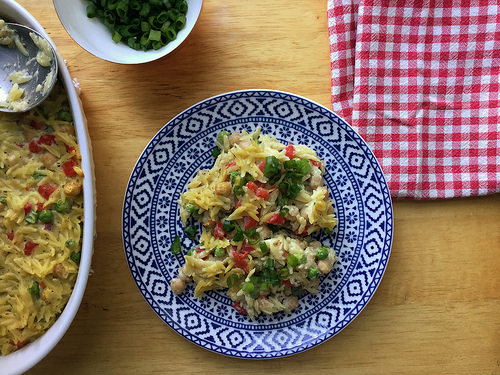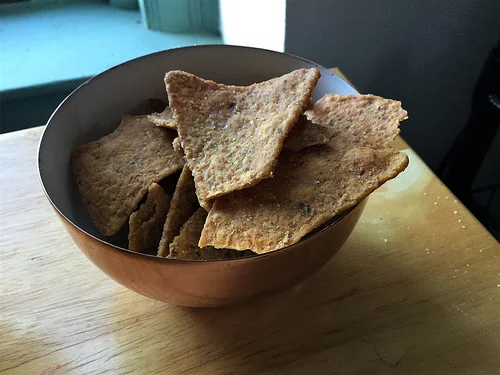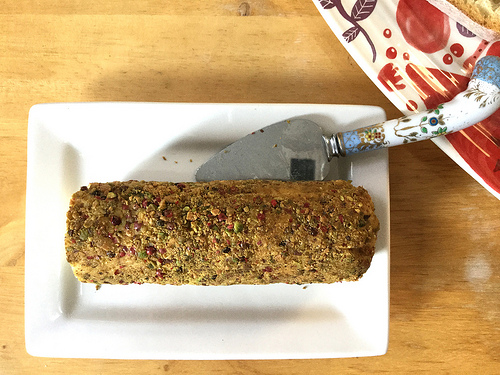Hey, welcome. Consider following MSV on Twitter and subscribing to the RSS feed, or sign up for email updates right over here.
If you're short on time, this protein salad—featuring a mix of hearty chickpeas and creamy avocado—is your pal. An immersion blender (or small food processor) will get you a dressing seasoned with lime and fragrant fresh cilantro in no time. Bonus: it's thickened and made creamy by way of the combination of oil and pumpkin seeds.
Once you've whipped up the dressing, there's nothing to do but mash canned chickpeas and stir those together with diced avocado. Top your toast or lettuce leaves and dig in with whatever lovely bit of produce you have in the kitchen as garnish. Hey, you're fed! And thereby ready to speed off to whatever's next on the schedule.
Cilantro-Lime Chickpea and Avocado Salad
serves 4 [see Note]
2 15-oz cans chickpeas
2 ripe avocados, halved and pitted
1/4 cup loosely packed fresh cilantro
1/4 cup unsalted pepitas (hulled pumpkin seeds)
1/4 cup canola or other neutral vegetable oil (olive oil will not work here)
1 very small clove garlic
2 TBSP lime juice
2 TBSP water
1/2 tsp fine sea or kosher salt
For garnish: slices of cucumber, tomato, or radish; snipped chives or scallions; or whatever fresh produce you like.
Drain and rinse chickpeas. Set aside in a sieve to let drain thoroughly. Slice avocado halves, still in the skin, into dice, and set aside.
Add remaining ingredients, except garnish, to a wide-mouth jar and process with an immersion blender until smooth (or, if you have a small food processor, that'll work, too).
Add chickpeas to a mixing bowl and mash roughly with a fork. Add avocado dice to the mixing bowl, using a spoon to scoop out the flesh. Add dressing and toss until combined.
Serve at once with your fresh garnish on toast or in lettuce leaves.
[Note: avocado does not keep well once exposed to air, so if you do not need all four servings at once, you can make a half-recipe by making all of the dressing at once, and reserving half in a small container in the refrigerator for several days. Prepare the other half of chickpeas and avocado at your leisure, and your dressing is already waiting for you.]











